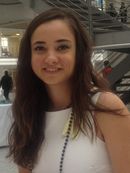PhD Thesis summary
This dissertation presents four empirical studies investigating the link between visual attention and long-term memory. Long-term memory in visual search is acquired by repeated exposure to invariant spatial configurations and expressed by expedited visual search in repeated over non-repeated displays (i.e., contextual cueing paradigm). The memory of repeated (invariant) displays is considered to be implicit. The present studies aimed to contribute to a better understanding of how visual attention and long-term context memory interact with each other using reaction time and eye tracking measures.
Study 1: Previous studies revealed that unpredictable target location changes impair contextual cueing, and the cueing-related gains in reaction times recover slowly with extensive training on the relocated displays. Study 1 examined whether other forms of attention guidance i.e., spatial grouping, play a role on the adaptation of context memory. For this reason, after the learning of target-distractor arrangements, we re-positioned the target in two different local contexts: local-sparse (consisting of one distractor item around the target) or local-dense (consisting of three distractors around the target) contexts. The results revealed successful adaptation to a new target location when the target was replaced in local-sparse, but not local-dense, regions. It was concluded that spatial grouping of the dense items makes this region salient in a sense that bottom-up attention is effectively guided towards the target region. The lack-of-adaptation of contextual cueing reported in earlier studies reflects not a mere inability of the cueing memory for adaptation. Instead, it suggests that both stimulus- and memory-based processes contribute to target detection.
Study 2: The dependency and independency of contextual cueing from a secondary working memory (WM) load was investigated in Study 2. In former studies, it was shown that contextual learning is independent of divided attention. Study 2 re-investigated the role of divided attention in both context learning and the expression of learned contexts, and further examined whether the influence of WM load is due to the load on spatial or executive WM capabilities. In the experiments, in order to distinguish between different stages of learning, a visual search task was combined with a secondary WM load either in the early or in the late phases of the experiments. To test whether disadvantageous WM effects result from spatial or executive WM load, observers were either given a task to maintain spatial WM items concurrently with a visual search task (aiming to unravel both the effects of spatial and executive WM), or a task where WM was performed before or after the visual search task, without a task overlap (aiming to test the effects from executive WM load).The findings revealed reduced contextual cueing under a spatial WM load and this effect was larger for the expression of learned configural associations. No interference was found when the secondary WM task was performed in a non-overlapping manner. It is concluded that the retrieval of context representations from long-term memory is dependent on spatial WM, i.e., divided attention.
Study 3: The possibility remains that contextual cueing is independent from divided attention. This issue was investigated in Study 3. Previously it was shown that visual search improves with task practice and this practice-related gain depends on the characteristics of a given task. Study 3 asked whether automaticity of contextual cueing can be enhanced until a level at which it becomes independent of attentional resources. In order to achieve this, a single (visual search), and a dual (visual search together with a secondary spatial WM) task were presented in close succession in individual blocks of trials. This procedure has been shown to facilitate the development of automaticity in visual search. The results revealed reliable contextual cueing under a demanding spatial WM task. It is concluded that the automaticity of contextual cueing retrieval has a modulatory effect on whether a spatial WM load task exerts a detrimental effect on the memory-guided visual search or not.
Study 4: Memory for contextual cueing was considered to be implicit. However, recent studies questioned the notion of implicit contextual memory both on theoretical and methodological grounds. It was claimed that contextual cueing may rely on either a single (incidentally acquired memory but can be accessible via explicit recognition tasks), or a two-memory (incidentally acquired but cannot be accessible in conscious reports) system. Study 4 investigated the idea that contextual cueing is initially unconscious but can become conscious later on through the help of focal attention (i.e., fixational eye movements). After the learning of contextual cues, observers’ eye movements were measured in an explicit recognition test, in which they had to judge the quadrant of the target. The results revealed higher fixation dwell times in the target quadrant of the invariant over random displays. Furthermore, manipulations of observers’ gaze in the recognition task showed that fixation dwell times also serve a purposeful role for the conscious retrieval from context memory. At the same time, fixation of the target quadrant was not a requirement of context-based search facilitation. Contextual cueing seems to receive support from at least two independent (automatic and controlled) retrieval processes, and focal attention seems to be the mechanism that links the retrieved information across the two processes.
Publications
Annac E, Pointner M, Khader PH, Müller HJ, Zang X, Geyer T (2019) Recognition of contextual cueing of visual search is supported by fixational eye movements. Journal of Experimental Psychology: Learning, Memory, and Cognition, 45:2147-2164.
Annac E, Zang X, Müller HJ, Geyer T (2018) A secondary task is not always costly: Contextual cueing of visual search can benefit from a demanding working memory load task. British Journal of Psychology, 110:281-399.
Kurcyus K, Annac E, Henning NM, Oeltzschner G, Edden E, Riedl V (2018) Opposite dynamics of GABA and gluta-mate levels in the occipital cortex during visual processing. Journal of Neuroscience, 38:9967-9976.
Annac E, Conci M, Müller HJ, Geyer T (2017) Local item density modulates adaptation of learned contextual cues. Journal of Visual Cognition:1-16.

